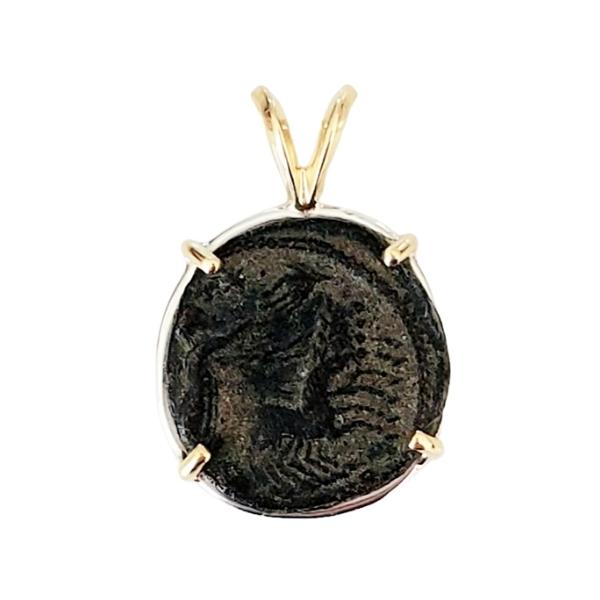


Constantine the Great Commemorative Coin 337-340 AD (126a)
"Manus Dei" - the "Hand of God"
Ancient Roman bronze coin with a desert patina. The hand of God reaches down toward Emperor Constantine, driving a quadriga (four-horse chariot), welcoming him to heaven.
Coin size: 15mm.
Hand-fabricated 18kt recycled gold and sterling silver mount.
One of a kind with a Certificate of Authenticity.
Chain available separately. See Chains
Dated: 347-348 AD
Choose options



"Manus Dei" - the "Hand of God"
Ancient Roman bronze coin with a desert patina. The hand of God reaches down toward Emperor Constantine, driving a quadriga (four-horse chariot), welcoming him to heaven.
Coin size: 15mm.
Hand-fabricated 18kt recycled gold and sterling silver mount.
One of a kind with a Certificate of Authenticity.
Chain available separately. See Chains
Dated: 347-348 AD
